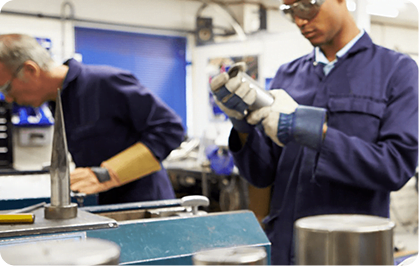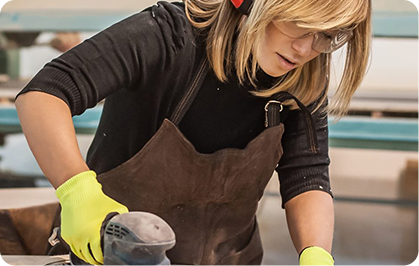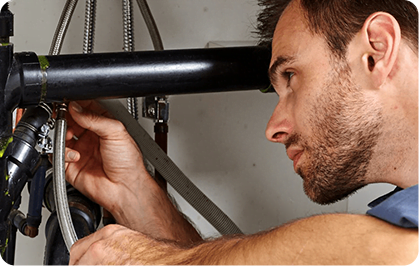Construction
Are you ready to reach your potential in the building and construction industry? With a nationally recognised qualification, you can gain the skills to excel in construction, carpentry, joinery, shopfitting and cabinet making.
Learn to become a qualified tradesperson and gain the potential to run your own business. Our qualifications will help you become an expert in this field. With your honed skills, you can work in the commercial and private sectors.
Take the first step today and contact us.

 12 months during school year | VETiS
12 months during school year | VETiSThe Certificate I in Construction qualification introduces the construction industry, job roles and workplace expectations and allows students to gain the skills and knowledge of various trades within the construction industry.
 48 months full-time | User Choice
48 months full-time | User ChoiceThe Certificate III in Cabinet Making and Timber Technology provides tradesperson-level skills in the manufacture and / or installation of products including furniture and cabinetry made from timber and other materials.
 48 months full-time | User Choice
48 months full-time | User ChoiceThe Certificate III in Carpentry provides the skills and knowledge to work as a carpenter within residential and commercial construction workplaces and includes setting out, manufacturing, constructing, assembling, installing and repairing products made using timber and non-timber materials.
 48 months full-time | User Choice
48 months full-time | User Choice The Certificate III in Joinery covers the joinery skills and knowledge required to work in residential and commercial applications and is completed through an apprenticeship.
 48 months full-time | User Choice
48 months full-time | User Choice The Certificate III in Shopfitting is a qualification covering the skills for a shopfitter working in residential and commercial, retail or office environments and is completed through an apprenticeship.
 6 months | Fee For Service
6 months | Fee For Service $225.00
$225.00The Food Safety Supervision Skill Set is a course for new or existing workers in the hospitality industry who wish to gain skills in hygienic practices and handling food safely.
 48 months full-time | User Choice
48 months full-time | User ChoiceThe Certificate III in Carpentry provides the skills and knowledge to work as a carpenter within residential and commercial construction workplaces and includes setting out, manufacturing, constructing, assembling, installing and repairing products made using timber and non-timber materials.
 48 months full-time | User Choice
48 months full-time | User ChoiceThe Certificate III in Cabinet Making and Timber Technology provides tradesperson-level skills in the manufacture and / or installation of products including furniture and cabinetry made from timber and other materials.
 48 months full-time | User Choice
48 months full-time | User Choice The Certificate III in Joinery covers the joinery skills and knowledge required to work in residential and commercial applications and is completed through an apprenticeship.
 48 months full-time | User Choice
48 months full-time | User Choice The Certificate III in Shopfitting is a qualification covering the skills for a shopfitter working in residential and commercial, retail or office environments and is completed through an apprenticeship.
 12 months during school year | VETiS
12 months during school year | VETiSThe Certificate I in Construction qualification introduces the construction industry, job roles and workplace expectations and allows students to gain the skills and knowledge of various trades within the construction industry.
Explore other industries
Want to know more?
If you’d like more information about any of the courses at Australian Trade Training College, please complete the form below and a team member will be in contact








